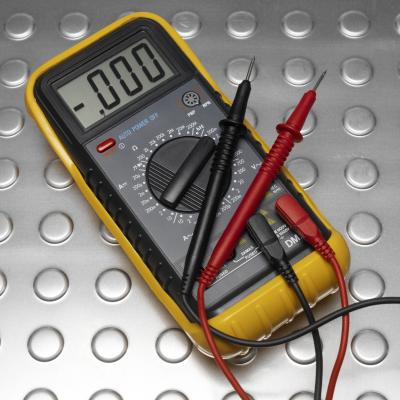
One function of a multimeter is to check for continuity. Continuity is the transfer of an electrical charge from one end of a wire to the other. If the wire lacks continuity, it has a "short." A short is a symptom of a break or fray in the wire and prevents an electrical system from functioning properly. Testing for continuity allows you to find the short in an electrical circuit without dismantling the entire system.
Turn the multimeter settings knob to "continuity." The continuity setting is indicated by a small microphone symbol. This setting tests the amount of ohms at one end of a wire in relation to the ohms discharged from the other end. Unequal ohms measurements are evidence of a short in the wire.
Place the negative multimeter probe, the black one, on one end of the wire you want to test for continuity. Place the red probe, the positive one, on the other end of the wire. Listen for a sustained beep, which indicates continuity.
Look at the monitor on the multimeter. Check the number of ohms displayed on the screen. Continuity requires at least .3 ohms. If the screen displays a smaller number, check the wire for breaks and frays.